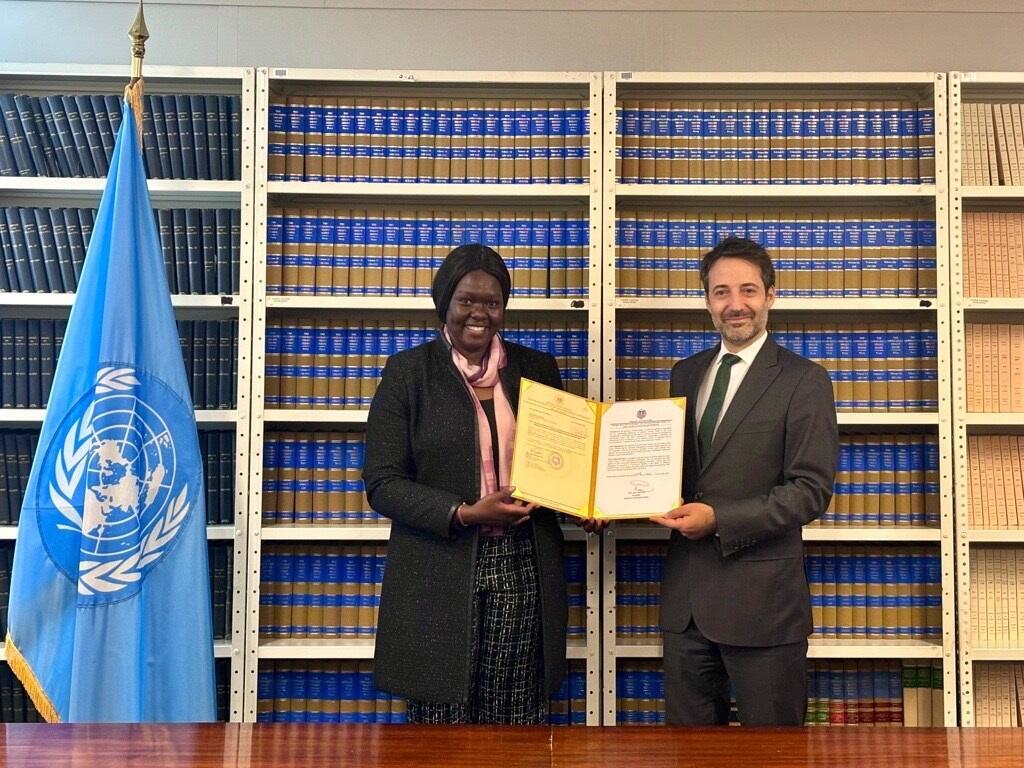South Sudan crisis generates more refugees for neighbouring countries
South Sudan crisis generates more refugees for neighbouring countries
More South Sudanese civilians are deserting their homes and crossing into neighbouring Uganda, Ethiopia, Kenya, as well as volatile regions of Sudan to escape from ongoing violence.
78,000 people have now fled to neighbouring countries since mid-December. More than half have headed for Uganda's West Nile region straddling South Sudan and the Democratic Republic of the Congo. In all, 42,654 mostly women and children, from Nimule in South Sudan, are now in the Ugandan districts of Arua, Adjumani and Kiryandongo. According to colleagues, many men are taking their families to the Ugandan border and leaving them there before returning back to their country. From the refugees we have spoken to we are hearing eye-witness accounts of killings, houses been burnt and shooting.
The largest concentration of people currently is at the Dzaipi transit center in Adjumani District, by the border with Nimule, where there are 32,505 refugees. The center was initially designed to only host 400 people, so most of those there are having to sleep in the open with their children and complaining of cold at night. As well as shelter, they need clean water, food, and basic household goods. As more people continue to arrive daily at Dzaipi we are working with the Ugandan authorities to set up additional camps
Ethiopia is also seeing an upsurge in arrivals. 18,616 South Sudanese have crossed into the Akobo area from the Jonglei region and we are beefing up our staff presence to better monitor new arrivals and respond to their needs.
Kenya has also seen 6,778 arrivals from Jonglei state. UNHCR is concerned by the large presence of children among them and we are planning a joint assessment mission with UNICEF to find out more about their situation, and the needs - including family reunification or foster care for those who are separated or unaccompanied.
In Sudan, available estimates are that 10,000 have crossed into West and South Kordofan, two states that are themselves volatile. The majority are nomads and, so far, we have not been able to verify exact numbers due to lack of access. However, the Government of Sudan says that, so far, only 1,371 of the new arrivals are South Sudanese refugees. UNHCR, WFP and other partners are providing assistance to these people via local partners, as well as to some of the nomads who are in dire need of humanitarian assistance.
With fighting still being reported in parts of South Sudan-mainly in the states of Jonglei and Upper Nile - and the slow progress in the political talks in Addis Ababa, we are anticipating further displacement both within and beyond the borders of South Sudan. Internal displacement figures are now at 355,000, up from 200,000 last week. The added displacement is being fuelled by the fighting itself as well as by fear of it, combined with deteriorating living conditions, including a lack of food in some markets.
Despite the challenges UNHCR continues to provide assistance to 230,000 refugees in 10 camps in South Sudan. We are planning to begin food distribution tomorrow for some 77,000 Sudanese refugees in the camps of Yida and Ajuong Thok in Unity State, with the support of the UN peacekeeping mission in South Sudan, which has agreed to redeploy troops to secure Yida.
For more information on this topic, please contact:
- In South Sudan (on mission) Kisut Gebre Egziabher on mobile. +211 928 067 699
- In Geneva, Adrian Edwards on mobile +41 79 557 9120
- Fatoumata Lejeune on mobile +41 79 249 34 83








